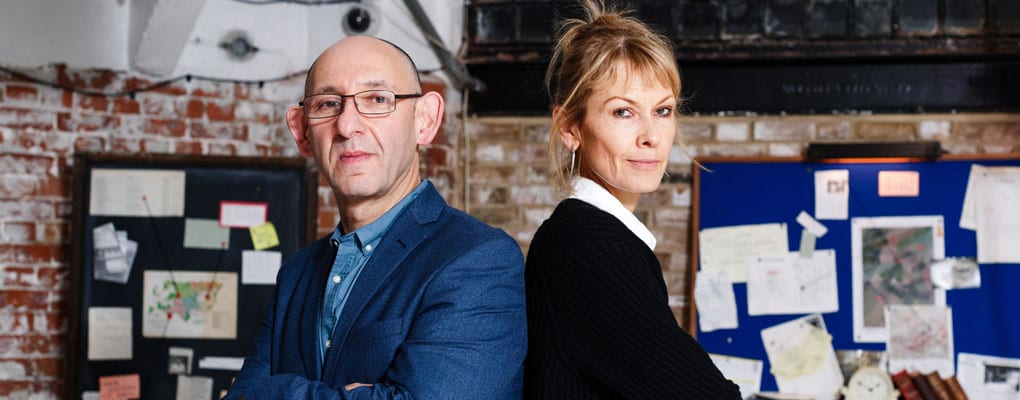Features
Murder, Mystery and My Family: modern trials for historic cases
Murder is universally considered to be the most heinous of crimes and yet, ironically, taking the criminal’s life in punishment is seen by many as the ultimate deliverance of justice.
Many immediate relatives, overwhelmed by grief and life changing loss following the murder of a loved one, believe taking a life for a life provides a just outcome. This is one reason why dispensing justice and punishment needs to be separated from those immediately affected. Cold hard reason, arm’s length reflection and experience show us that the visceral desire for retribution may itself create further and irreversible injustice. A justice system which may itself create injustice is anathema.
With these thoughts in mind, when I was invited to investigate historic cases of murder resulting in capital punishment I was immediately interested. The series Murder, Mystery and My Family, was conceived to re-investigate historic convictions in order to determine whether irreversible miscarriages of justice had occurred. Each episode is driven by the participation of a living relation of the convicted defendant. Some family members argued passionately in favour of their ancestor’s innocence; others took a more sanguine approach. A retired senior judge was tasked with making the ultimate determination in each case. Whatever the outcome, the journey of retracing the steps of their condemned forebears has proved to be a cathartic experience for family members.
Researchers for Murder, Mystery and My Family unearthed an astonishing amount of contemporaneous material. This enabled an informed appraisal of the evidence produced at the original trial allowing a sustainable modern-day determination to be reached.
There have been substantial developments in the criminal justice system since 1839, the date of the first case we examined. For example, prior to 1898, a defendant had no right to give evidence. Murder convictions almost always resulted in the death penalty and partial defences to murder [which reduce the charge of murder to that of manslaughter] were limited. Women who killed abusive partners were shown no sympathy or mercy and the understanding of mental disorders was rudimentary. Most significantly, the death penalty in the UK is now a thing of the past, replaced by a mandatory sentence of life imprisonment. Today the ‘minimum term’ or the period of time for which a person convicted of murder must actually spend in prison is pronounced in public.
There have been enormous advances in scientific and technical evidence since the time of the convictions we investigated. Despite lacking these sophisticated technical tools, we found the scientific evidence that was presented in the historic cases was remarkably advanced. Modern-day experts in ballistics, toxicology and blood spatter, from who we sought advice, only rarely challenged the original scientific findings. Pathological evidence was not so kindly reviewed and the celebrated pathologist Dr Bernard Spilsbury came in for more than a little criticism from twenty-first century experts.
In the cases which took place prior to 1900, no trial transcripts existed and we had to rely on letters, diaries and reports published in newspapers. Detailed though these were, they could never be as reliable as a recording made by a court stenographer. In the trials which took place after the year 1900, we had the benefit of court transcripts which have been retained and archived. Photographs, plans and judges’ notes were also available to us and proved to be of great assistance. In one case, we were given temporary custody of an original trial exhibit, a gold necklace, which was a critical piece of evidence which led to the conviction of the defendant.
In the last 40 years, legislation has been introduced in England and Wales to protect defendants in police custody. The Court of Appeal is now more robust in criticising trial judges if they failed to act impartially. Today, fewer appeals are brought as a result of challenged police evidence or judicial bias.
During the course of the first three series, Murder, Mystery and My Family examined thirty cases. The sobering result of our investigations revealed eleven cases in which Judge Radford agreed the convictions were unsafe. For those justifying capital punishment, Murder, Mystery and My Family should give serious pause for thought.
Don’t miss criminal barristers Sasha Wass QC and Jeremy Dein QC in the new series of BBC One’s Murder, Mystery and My Family. Click here to find out when the next episode airs.
1 Comment
Join the discussion
Please note: Moderation is enabled and may delay your comment being posted. There is no need to resubmit your comment. By posting a comment you are agreeing to the website Terms of Use.



I wonder how many have been quashed?